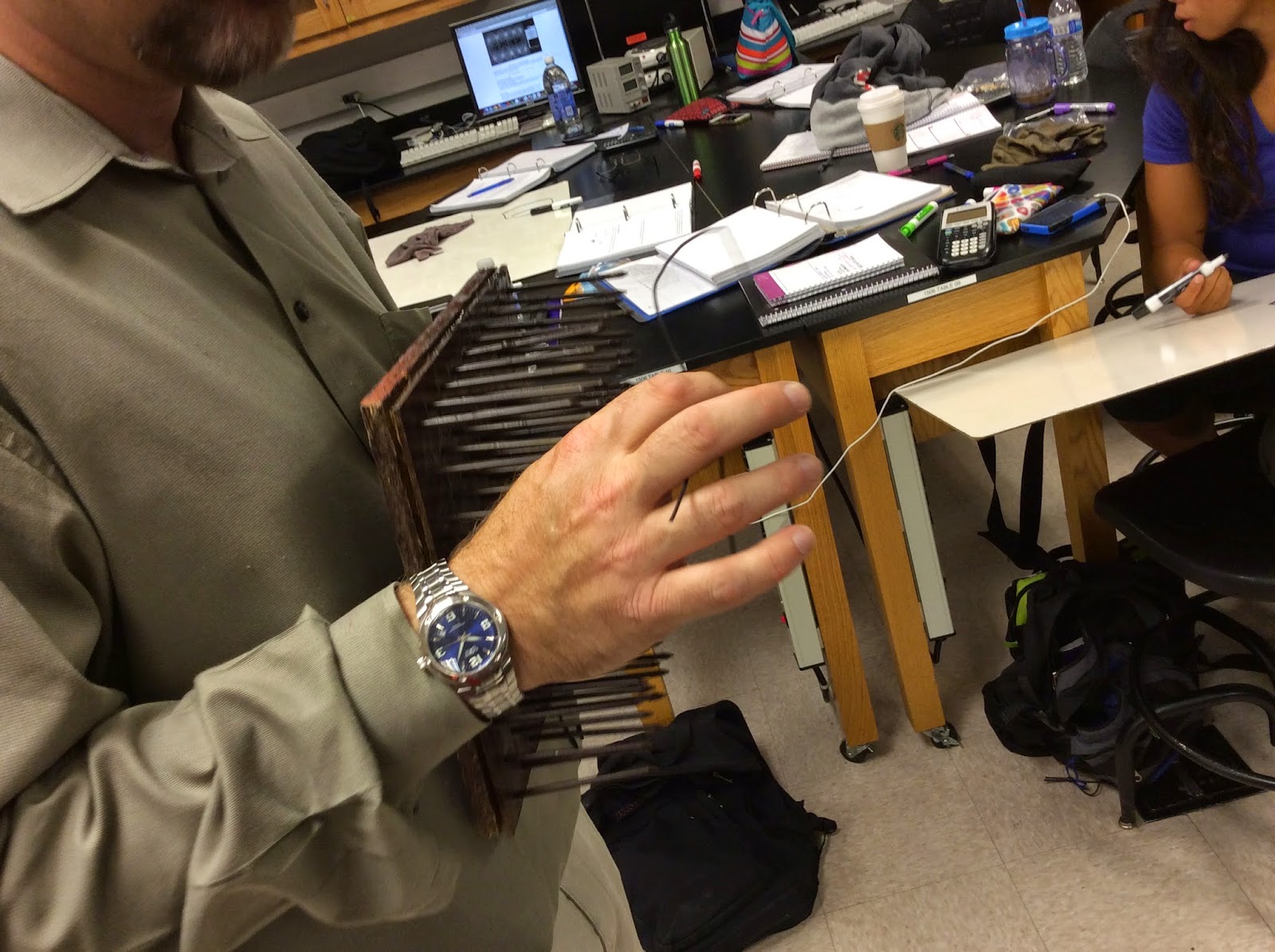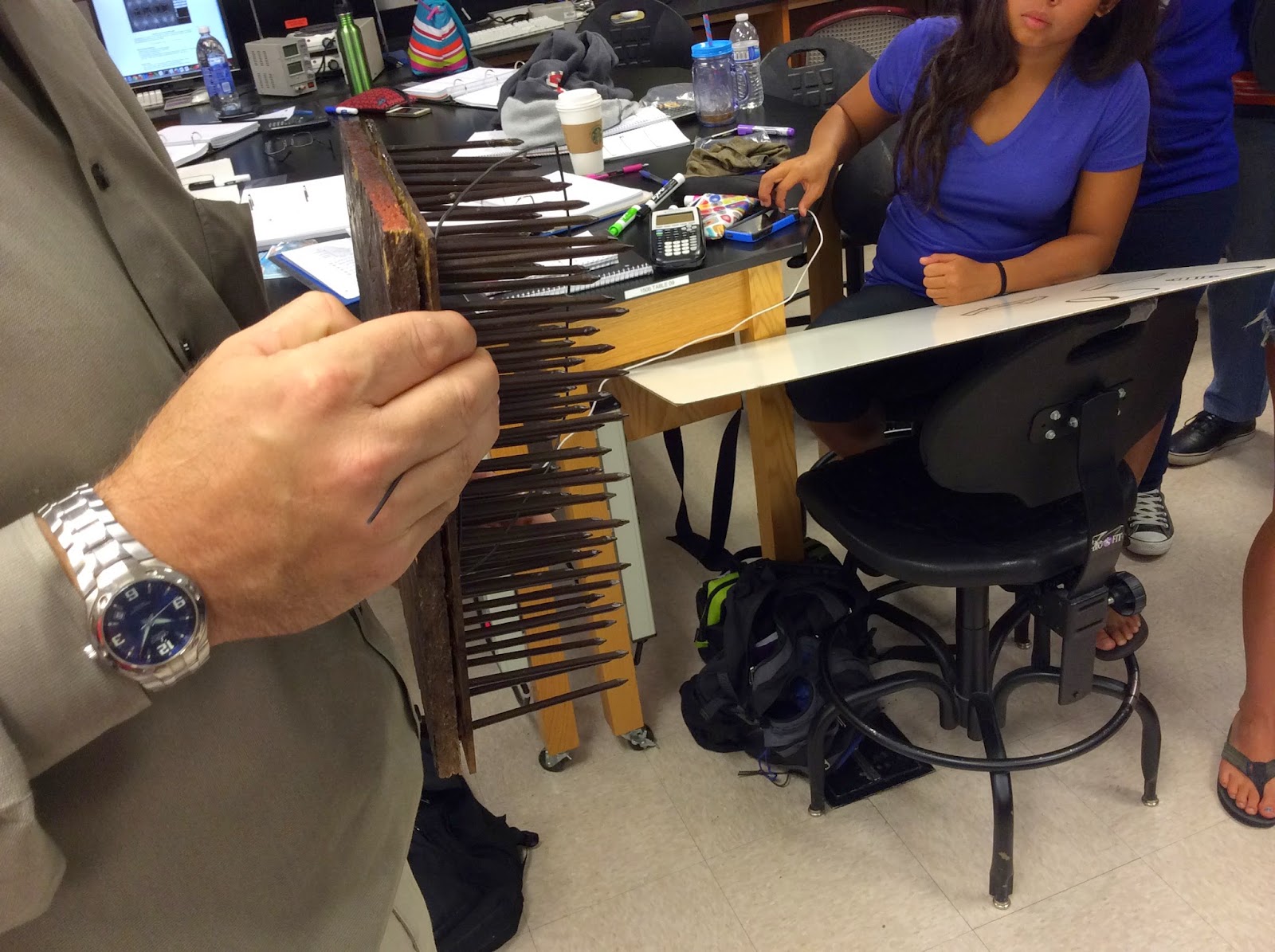1. Gauss' Law in Flatland
Here is the graph to show the electric flux of different charges, +1,+2 and -2 charges. We count the electric flux by counting the difference between number of lines into the charge region and number of lines out.
This is a definition of the flux. It only depends on the number of lines in and out, and the surface area of it.
2. Gauss’s Law in Three Dimensions
There is no electric charge in the surface since charges accumulate on the surface of objects.
3. What is the Excess Charge in a Metal (In class notes, not the lab notebook)

We make few assumptions on which way is the safest while there is lightening.

We guess that the safest way is to stay in the car. Here are some explanations.
1.) Tree is tall (distance is short, easier to discharge)
2.) Is better then 1, but still near the car (electrons travel outside car)
3.) Umbrella is a conductor. Distance is short
4.) still have chance to get hit by lightening
5.) The electron will travel outside the car, since car is made by metal, which is a conductor, and the inner part of the car is an isolator. (Best choice)
The answer is that stay inside the car is safe. Our assumption is correct.
4. Microwave Demos
We are going to heat several things in a microwave. The frequency for microwave is about 2.5 G Hz. At this range, microwave will be absorbed by water. The vibration of water molecules will heat up things. At this frequency, microwave will not be absorbed by plastic, glass or ceramics.
1.) We start with putting metal fork into microwave
We heat the metal fork up. We guess that there will be sparks since we are told that we should never put metal into microwave.
However, what we see is that——nothing visible happens. However, when we touch it, it is hot. It has a larger mass. So it takes longer to heat up.
2.) We then put CD into microwave. We first predict that there will be sparks and it will burn.
We can see that the CD is burnt, and there are bubbles on it. The charges are on the surface of the CD. Since CD has small mass of metal particles. So the charge could have larger affect.
3.) We put a match which is on fire into microwave. We make a prediction that the flame will be larger. We guess that the flame becomes larger because microwave provide energy to the water vapor in air and ignite the gas.

We can see that the fire gets bigger. Also, the flame moves at a frequency of 2.5G Hz, which is the frequency of microwave.
When we light a match, the exhaust gases that contains unburnt fuel and water vapor goes above the flame. It adds lot of energy to its mixture, but water is what vibrates well. So the flame will vibrate at a frequency of 2.5G Hz.
4.) We then heat steel wool.
We see lots of sparks while heating it up. Its mass is small, so when adding lots of charges, it discharges from steel wool which causes lots of sparks.
We then heat soap in microwave.
We do not see anything. We guess that it will bubbles like the CD. However, we do not see anything. Soap is expected to expand as there are air sac with water vapors in the soap. The experiment fail to show the effect. It might be because the water vapor has been dried out for a long period of time.
Theoretically, the soap will expand, since it discharges in the inside.
Then, we heat up the Christmas Decoration Ball, which contains metal.
It actually has two different results. When we place the sharp side down, which the whole ball is considered as sphere shape, nothing happens, because the charge on sphere are uniform. When we place the sharp side up, the ball is on fire. It contains coding over it. But the surface is very small. So at each area it contains lots of charge, which makes the ball on fire.
We then heat up a light-ball.
The bulb is filled with Ar gas. The light bulb will light up with different color.
We then heat up a grape.
There is no effect on the grape since the grape is in round shape, but the grape will be burned if it is cut into half as the cut surface is no more round in shape.
Finally, we heat up a juice bag.
It has blue spark, and it expands a little bit. The water inside it becomes vapor so the volume increases which cause the bag expand.
Active phys 1-5

Answers for Active Physics 1-5
Summary:
In today’s class, we learn what is flux and Gauss’s Law. We know that flux is determined by the number of electric field lines (which is related to the strength of electric field ), and the surface area. We know how microwave works. We learn what kind of material is able to absorb microwave and what cannot.
































































